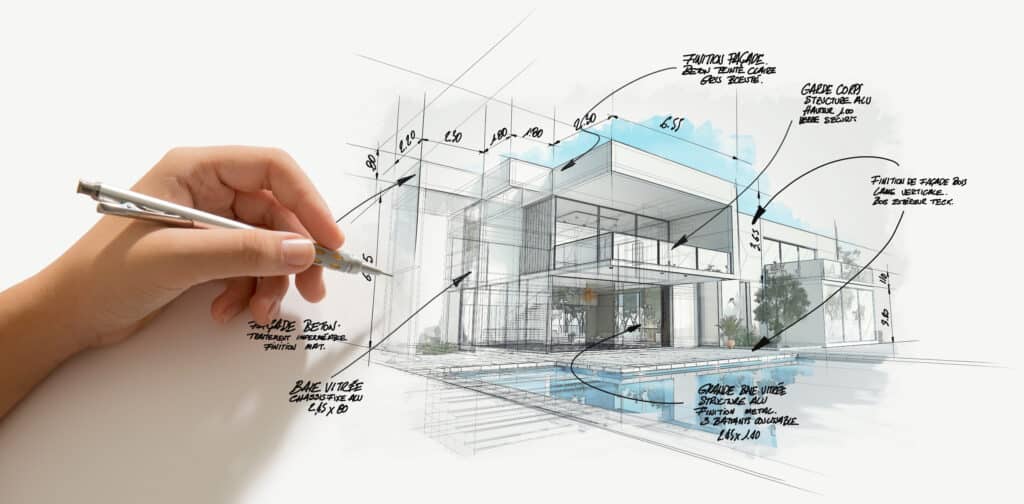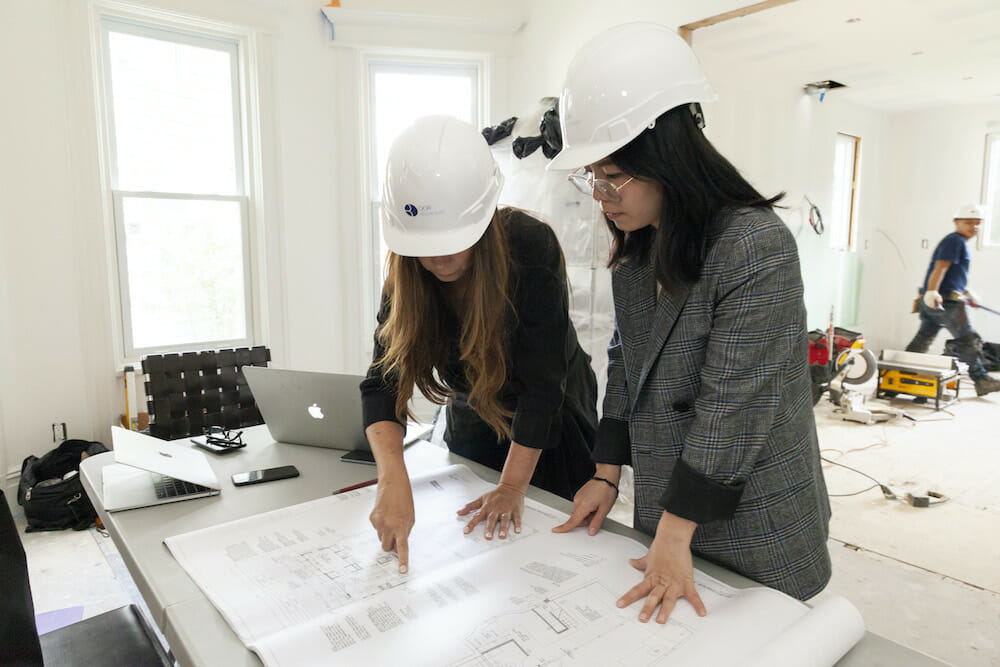Architect Services Explained: What to Expect from A to Z
Architect Services Explained: What to Expect from A to Z
Blog Article
Recognizing the Diverse Job Paths Available for Aspiring Architect
As an aspiring Architect, you have a world of job paths waiting for you. Whether you're drawn to standard design or the subtleties of sustainable design, there's a particular niche that aligns with your interests.
Standard Style: Designing Buildings and Structures
Standard style focuses on creating buildings and structures that blend capability with visual appeal. As you explore this field, you'll value the detailed equilibrium in between kind and purpose. You'll discover to attract inspiration from historical designs, incorporating components like proportion, materials, and craftsmanship. Your styles can reflect social heritage, showcasing local customs while fulfilling modern-day demands.
You'll create abilities in composing, model-making, and website evaluation, enabling you to imagine and communicate your concepts efficiently. Engaging with clients, you'll need to comprehend their vision and convert it right into possible designs.
Furthermore, building codes and sustainability methods are vital in your work, guaranteeing your structures are environmentally pleasant and risk-free. As you grow in your profession, you'll find chances in property, industrial, or even repair jobs, each offering distinct obstacles. Accepting standard architecture leads the way for a fulfilling job that admires the past while shaping the future.
Urban Preparation: Forming Neighborhoods and Public Spaces
As an ambitious Architect, you can play a vital role as a city coordinator, transforming how neighborhoods connect and function. By utilizing area engagement strategies, you'll guarantee that homeowners have a voice in shaping their environment. And also, incorporating sustainable layout principles will aid develop areas that not just satisfy today's needs yet likewise shield the future.
Role of Urban Planners
While several might think of architects as the single dreamers behind structures, metropolitan coordinators play an essential function in forming the wider landscape of communities and public spaces. By collaborating with different stakeholders, you'll assist develop parks, transport systems, and residential locations that advertise social interaction and access. Your proficiency in spatial style and neighborhood characteristics allows you to envision future development while maintaining social heritage.
Area Interaction Techniques
Effective area interaction strategies are essential for city coordinators to guarantee that the voices of citizens are heard and valued in the planning procedure. To promote meaningful discussion, you ought to prioritize open discussion forums and workshops where community participants can express their ideas and worries. Use studies and social networks to reach a broader target market, making sure diverse point of views are included. Collaborating with neighborhood organizations can improve trust and facilitate much deeper connections. It is necessary to supply clear details regarding suggested projects and decision-making procedures, allowing citizens to really feel informed and equipped. By proactively integrating and paying attention comments, you'll develop areas that mirror the community's demands, ultimately resulting in more sustainable and successful urban atmospheres. Embrace openness and continuous dialogue for long-term effect.
Sustainable Design Concepts
When developing urban areas, including sustainable layout concepts is crucial for creating environments that prosper both ecologically and socially. Consider incorporating environment-friendly areas, like parks and gardens, to boost biodiversity and improve air top quality.
Designing with water conservation in mind is also crucial-- consider rain gardens and permeable surfaces to manage stormwater. Entailing community members throughout the preparation process assurances that the spaces you create meet their demands and encourage social interaction. By accepting these principles, you'll add to lively, lasting urban landscapes that profit everyone.

Landscape Style: Producing Sustainable Outside Atmospheres
As you discover landscape style, you'll discover essential design principles that develop functional and stunning outdoor areas. Sustainable methods play a vital duty in making certain these settings thrive while reducing environmental effect. And also, you'll locate a selection of job opportunities that permit you to make a real difference in exactly how individuals communicate with nature.
Layout Concepts in Landscape
Understanding style principles in landscape style is crucial for producing lasting exterior settings that balance with nature. You'll require to consider components like equilibrium, percentage, and scale to ensure your styles feel cohesive and inviting. Furthermore, pay attention to seasonal adjustments, designing with products that complement the environments year-round.
Lasting Practices Introduction
Lasting practices in landscape design not just concentrate on aesthetics however additionally prioritize eco-friendly health and wellness and resource preservation. By incorporating indigenous plants, you enhance biodiversity and decrease the requirement for chemical plant foods and chemicals. Carrying out efficient watering systems assists preserve water and lessens drainage, safeguarding neighboring ecological communities. You can develop areas that promote dirt health and wellness, such as practicing and using natural products permaculture principles. Additionally, including eco-friendly facilities, like rainfall gardens and permeable pavements, help in stormwater administration and reduces metropolitan heat. You contribute to a much healthier earth and offer areas that cultivate area connection when you create outside atmospheres with sustainability in mind. Ultimately, these techniques assure your designs profit both individuals and the environment for many years to find.
Profession Opportunities Exploration
With a strong foundation in lasting methods, landscape architecture uses a variety of career courses that allow you to make a meaningful effect on the environment. You could work as a landscape designer, developing visually pleasing and practical outdoor spaces, or concentrate on eco-friendly reconstruction, helping to restore broken environments. Urban organizers frequently work together with landscape engineers to create green areas in urban settings, improving city livability. If you're passionate regarding education, take into consideration becoming a landscape architecture teacher, motivating future generations. In addition, you may work with nonprofits concentrated on environmental sustainability or take part in research to innovate brand-new techniques. Each path not only forms stunning environments however likewise promotes a much healthier planet my explanation for future generations.
Lasting Style: Focusing on Eco-Friendly Practices
As you discover your career in architecture, accepting eco-friendly techniques can establish you apart in an affordable field. Sustainable design focuses on creating structures that decrease environmental effect while improving resident well-being. By incorporating renewable products, energy-efficient systems, and lasting structure strategies, you'll add to a greener future.
Begin by gaining expertise of eco-friendly certifications like LEED or BREEAM, which can bolster your qualifications. Consider exactly how view publisher site all-natural light, air flow, and thermal performance can maximize style. Team up with designers and ecological specialists to innovate options that decrease waste and conserve resources.
Do not forget the relevance of area participation-- appealing neighborhood stakeholders can motivate layouts that balance with the setting. As customers significantly focus on sustainability, your experience in environmentally friendly methods will not just draw in projects yet likewise satisfy your interest for accountable style. Welcome this important element of the profession, and watch your job prosper.
Historical Preservation: Protecting and Restoring Social Heritage
While you commence on your building trip, consider the vital role of historical preservation in preserving our social heritage. This field concentrates on the protection and repair of significant buildings, websites, and frameworks that inform the tales of our past. By participating in historic preservation, you'll help protect the architectural tradition that shapes community identification.
As a historic conservation Architect, you'll analyze historic significance and evaluate the condition of structures. You'll function closely with conservationists and chroniclers to ensure genuine remediation methods are employed. This job path permits you to blend creative thinking with research, enabling you to develop services that value original products and craftsmanship.
Your work not just adds to sustainability by reusing existing structures but additionally cultivates a feeling of pride within areas. Accepting this path will certainly help you become a guardian of history, protecting the stories and aesthetics that enhance our lives.
Interior Style: Enhancing Indoor Spaces
Historic preservation and interior architecture both share a commitment to improving the built atmosphere, however they concentrate on various facets. While historical conservation emphasizes maintaining a structure's social and historical value, indoor architecture nos in on enhancing interior areas for performance and visual appeals.
As a hopeful Architect, you'll locate that indoor style enables you to mix creativity with technical abilities. You'll create spaces that not only look great however additionally advertise convenience and effectiveness. This field includes comprehending exactly how light, color, and products engage within a room, influencing mood and functionality.
You'll service different projects, from household homes to business offices, making sure that each atmosphere satisfies the requirements of its residents. By focusing on customer experience, you can change interiors right into useful and motivating rooms, making a significant influence on how people communicate with their environments. Accept the opportunity to improve interior environments and form the way individuals work and live.
Industrial Design: Combining Capability With Visual Appeals
Commercial design plays an essential duty in developing items that seamlessly blend appearances with performance, ensuring that what you make use of day-to-day is not only visually attractive however additionally useful. As an ambitious Architect, you can engage yourself in this field, focusing on making everything from furnishings to consumer electronic devices. Your job involves understanding user demands, materials, and producing procedures, allowing you to produce ingenious remedies that enhance daily experiences.
In commercial layout, you'll typically work together with engineers, marketing professionals, and suppliers, making certain that your layouts are not just stunning however also possible. You'll discover to stabilize kind and function, focusing on functionality without sacrificing style. By sharpening your skills in mapping out, 3D modeling, and prototyping, you'll be well-appointed to bring your ideas to life. This profession path supplies a vibrant atmosphere where creativity fulfills practicality, making it a gratifying selection for reference architects interested in forming the items of tomorrow.
Frequently Asked Concerns
What Educational Qualifications Do I Required to Become an Engineer?
To come to be an architect, you'll need an expert level in design, typically a Bachelor's or Master's. Additionally, you'll need to complete an internship and pass the Architect Registration Assessment to exercise legitimately.
Exist Certification Needs for Different Architectural Profession Paths?
Yes, there're qualification demands for different architectural courses. Architect. You'll require to pass examinations, total teaching fellowships, and in some cases pursue specialized training, relying on your selected focus, like landscape architecture, urban design, or historic conservation
What Software Skills Are Essential for Architects Today?

How Can I Gain Practical Experience While Researching Architecture?
You can gain sensible experience by interning at architectural companies, joining design competitors, volunteering for neighborhood projects, or teaming up with schoolmates on real-world jobs. These opportunities improve your skills and construct valuable links in the industry.
What Task Opportunities Exist Outside Traditional Design Firms?
You can explore different work possibilities outside typical style firms, like metropolitan preparation, indoor design, landscape architecture, building and construction administration, actual estate development, or even duties in sustainability consulting. Each offers unique challenges and benefits.
Whether you're attracted to traditional style or the nuances of sustainable layout, there's a niche that lines up with your interests.When developing city spaces, integrating lasting design principles is vital for developing environments that thrive both ecologically and socially.As you discover landscape style, you'll discover important style concepts that produce useful and lovely outdoor spaces.Understanding style principles in landscape design is vital for creating lasting exterior atmospheres that balance with nature.In commercial style, you'll frequently collaborate with designers, marketing experts, and manufacturers, ensuring that your layouts are not just lovely however also feasible.
Report this page